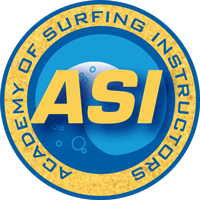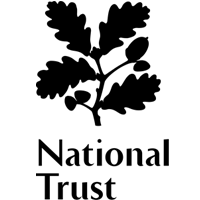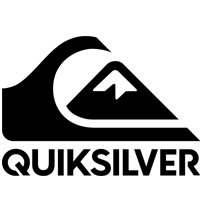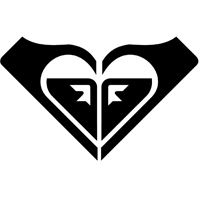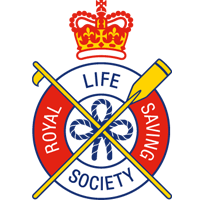Sometimes it seems that there are literally thousands of seemingly innocuous faux pas that could damn your fledgling surfing career and condemn yourself to a life of having sand kicked in your face by some chiselled, granite-jawed cad of a surfer.
Trust me though, while some line-ups are friendlier than others, just like in other walks of life most surfers are happy to offer advice and are invariably flattered to be asked. In the meantime here are our top tips to get you going.
1. Have a Surfing Lesson
Ah, but I would say that wouldn’t I?
Well, I speak from bitter experience of learning to surf when there were no surf schools and not many other surfers to go to for advice. I had my first real surf when I was 12 years old and like most youngsters stood up during my first session.
And that’s where things got difficult. I could stand up in the whitewater but I just didn’t have a clue how to take the next step and surf the green unbroken waves. It took me 2 YEARS to get to the next stage and I only managed it through a combination of sheer bloody mindedness and feelings of insane jealousy when I saw that my next door neighbour managed it before me. I even flirted with bodyboarding and giving up in that time. It was serious.
For a sense of proportion we reckon that with cooperative surf you can surf green waves within 2 or 3 lessons. So 2 years or 2/3 lessons? It’s not a tricky choice and if I had my time again I know what I’d be begging my mum for on my birthday.
And a Millennium Falcon obviously.
We have all sorts of surfing lessons going on every day of the week so if you are just beginning or need to fine tune your surfing then we have a surfing course for you.
2. Where Do You Surf?
When you are just starting out then beachbreaks are the way to go for beginner surfers. Cornwall, and in particular the Gwithian area of St Ives Bay, has many beautiful beaches and sheltered coves that are perfect for learning to surf.
But which one is best? They all have their moments but there are several variables that go toward making perfect surf. Swell size, wind direction, wind speed and swell period are all big factors in deciding where is best to go. If you want to get a broad overview of the surfing conditions then magicseaweed.co.uk will provide this.
On the Magicseaweed app or website ‘swell size’ refers to the open ocean wave height but it’s the ‘swell period’ that will have a big influence on how big the waves are when they get to the beach. Anything over 10 seconds for swell period indicates a good quality swell that will march towards the beach in ‘corduroy lines’. Fewer than 8 seconds and the waves will be disjointed and broken up. Over 15 seconds and the swell should be powerful. A 27ft swell with a 21 second period will be terrifyingly large and one to avoid!
With the wind then a light offshore breeze blowing from land to shore will give optimum conditions. That doesn’t mean that you can’t surf in cross-shore or onshore conditions, far from it, but most surfers like the grooming affect that offshore winds have on waves.
Confused? Then just ask a surfer or one of us in the surf school. We will happily tell you where the best beach to learn surfing is on that particular day.
3. Buying your First Surfboard
So you’re really beginning to enjoy surfing and would like to buy your first surfboard? That’s great news and I suspect the first place that you will look will be the internet. There is a bewildering array of surfboards that look like they might be suitable online but your first choice should be to head to a surf shop for advice. Find a shop with lots of surfboards to choose from and take a surfing mate with you if you can.
As a general rule the bigger the surfboard the more buoyant and stable the surfboard will be. You are looking for a surfboard with enough volume to make catching and standing up on waves relatively easy while not being so stiff that you can’t progress as your surfing improves. This means that, depending on your size and fitness, you will be looking at funboards, mini-mals (short for mini-malibu surfboards) and mals (malibu surfboards).
Adult beginner surfers should be looking at a board that is at least 7’0 long and the bigger you are the bigger the surfboard should be. Funboards tend to be narrow so are less stable but more maneuverable. They are ideal for fit, agile and younger surfers. Mini-mals tend to be in the 7-8ft length range and a touch wider that funboards. Mini-mals are the surfboard that most adult beginner surfers will find have the best balance of stability and maneuverability for their needs. Malibus are any board over 8ft and will be the preferred choice of larger beginner surfers.
Beginner surfboards come in all sorts of different constructions too. There is Polyurethene (Pu foam and fibreglass) which is the most common for performance surfboards. Beginner surfboards tend to be made from Polystyrene foam with an Epoxy covering which offer a good balance between price and durability. In fact they are so durable that we use Torq’s range of epoxy surfboards in our hire fleet at the surf school. The other common type of beginner surfboard is the softboard. These are the safest surfboards and are often ideal for absolute beginners however they lack the maneouvrability of the harder plastic surfboards such as PU and Epoxy. All three constructions will do the job but I believe epoxy is the way to go for most beginner surfers.
By all means buy your surfboard online but you should check out what type of surfboard is suitable for you in a surf shop beforehand. Remember though, if you do buy online then postage will make up £25 – £40 of the surfboards total cost. Even more if the board is being imported.
4. Choosing your First Wetsuit
This is another part of surfing that you shouldn’t rush into. The most, most, most important thing is the cut of the suit. It has to fit you perfectly, not Joe Pro who just won the Pipe Masters again, not the cool kid who rips your local beach to pieces, not your mate who swears by Brand X, but you.
Any little pocket of air in the suit when you try it on will fill with water which will a. cool you down, b. weigh you down, and c. slosh around annoyingly.
Meanwhile any little tight patch, say behind the knees, under the armpits or around the neck will at best be uncomfortable and at worst be chafed into astonishingly painful open sores. Wetsuits don’t ‘give’ with wear like a good pair of leather shoes, they have 100% memory (or as close as possible) so you’ve got to get it right in the shop. Buy online using the manufacturers size charts if going to a surf shop is impossible but make sure that the online shop accept returns for wetsuits that don’t fit.
For Britain in the summer a 3/2 ( a wetsuit with 3mm neoprene on the body and 2mm neoprene on the arms and legs) will be fine from May to late October. From October to May you would want a 5/3 winter suit (6/4 if you live in Scotland or the North East). If you are on a budget and plan to surf year round but can only afford one wetsuit then go for a 5/3 – if you’re too hot in summer you can let some water in. You can’t use a 3/2 in the winter unless you have treacle for blood.
Lastly if you find a brand that has a cut that fits you don’t trust the next seasons wetsuit to fit you in the same way. Manufacturers change their wetsuit designs frequently which can result in a slight difference in the cut of the suit so get back down to the surf shop and try a few on.
5. Is Fitness Important?
It is but don’t let a perceived lack of fitness be a barrier to getting in the water and having a surf. We see all shapes, sizes and ages at our surf school and we reckon we can get everyone standing up within three lessons, the vast majority in the first lesson.
With surfing upper body fitness is key. People who swim and avid cross-fitters tend to do very well.
And the people who do best?
Regardless of fitness it’s women.
Because they listen!
